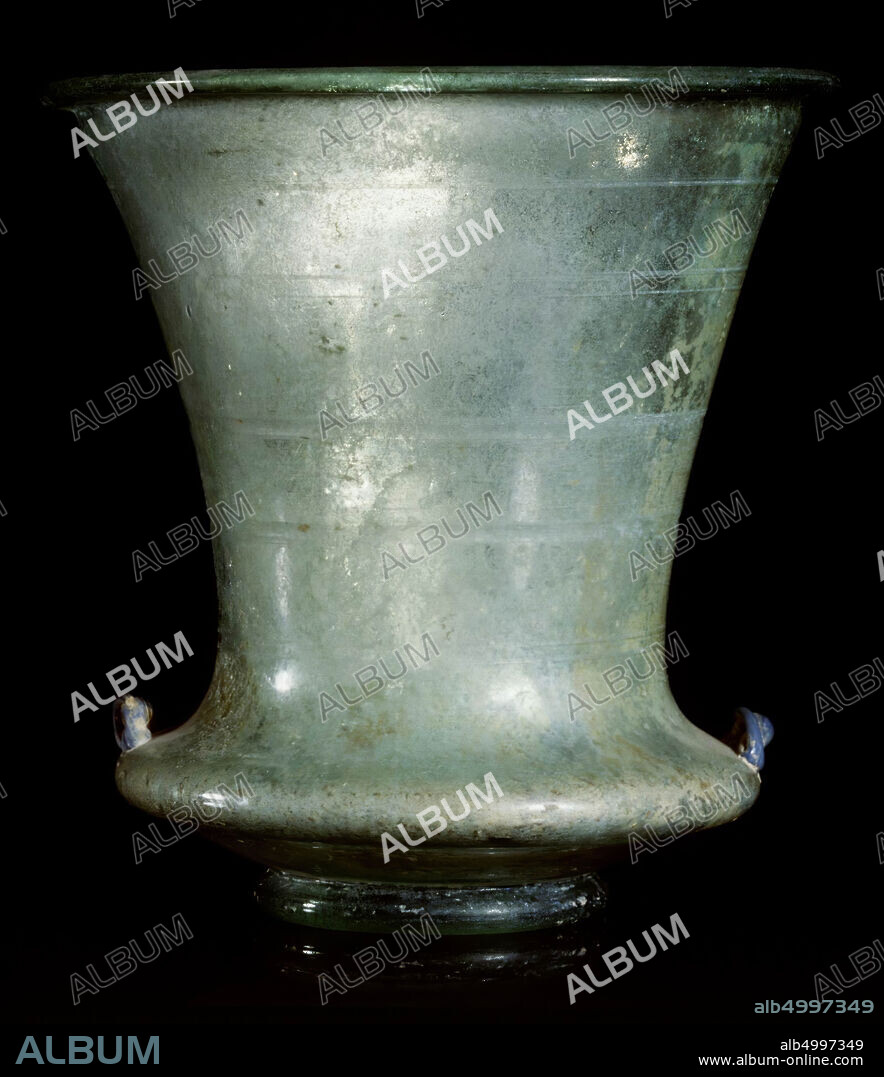alb4997349
This perfectly shaped chalice is in the tradition of the showcup, which the Romans called carchesium. The light green glass is made of extremely thin-walled. The decoration consists of mini-ears of ultramarine glass on the shoulder and some ground horizontal bands on the upper part of the carchesium. The actual vase body consists of a layer and strongly convex part, which turns into an elegantly shaped, flared chalice. The shape is at the transition point of two worlds: on the one hand the piece stands in the tradition of the Roman showcup, on the other it points to the luster of Islamic glass art, with its mosque lamps in the same shape., Crockery, chalice, glass, H 14.6 cm, D 13.7 cm, Roman Period 400-700 ad, Turkey.

|
Ajouter à une autre Lightbox |
|
Ajouter à une autre Lightbox |



Avez-vous déjà un compte? S'identifier
Vous n'avez pas de compte ? S'inscrire
Acheter cette image.
Sélectionnez l'usage:

Légende:
Voir la traduction automatique
This perfectly shaped chalice is in the tradition of the showcup, which the Romans called carchesium. The light green glass is made of extremely thin-walled. The decoration consists of mini-ears of ultramarine glass on the shoulder and some ground horizontal bands on the upper part of the carchesium. The actual vase body consists of a layer and strongly convex part, which turns into an elegantly shaped, flared chalice. The shape is at the transition point of two worlds: on the one hand the piece stands in the tradition of the Roman showcup, on the other it points to the luster of Islamic glass art, with its mosque lamps in the same shape., Crockery, chalice, glass, H 14.6 cm, D 13.7 cm, Roman Period 400-700 ad, Turkey
Crédit:
Album / quintlox
Autorisations:
Taille de l'image:
4800 x 5562 px | 76.4 MB
Taille d'impression:
40.6 x 47.1 cm | 16.0 x 18.5 in (300 dpi)
Mots clés:
CALICE • CORPS MAINS • EPAULE • FORMÉ • FORMES • MAIN • MAINS • TARDITIONNEL • TRADITION • TRADITIONELLE • TRADITIONNEL • TURQUIE
 Pinterest
Pinterest Twitter
Twitter Facebook
Facebook Copier le lien
Copier le lien Email
Email
